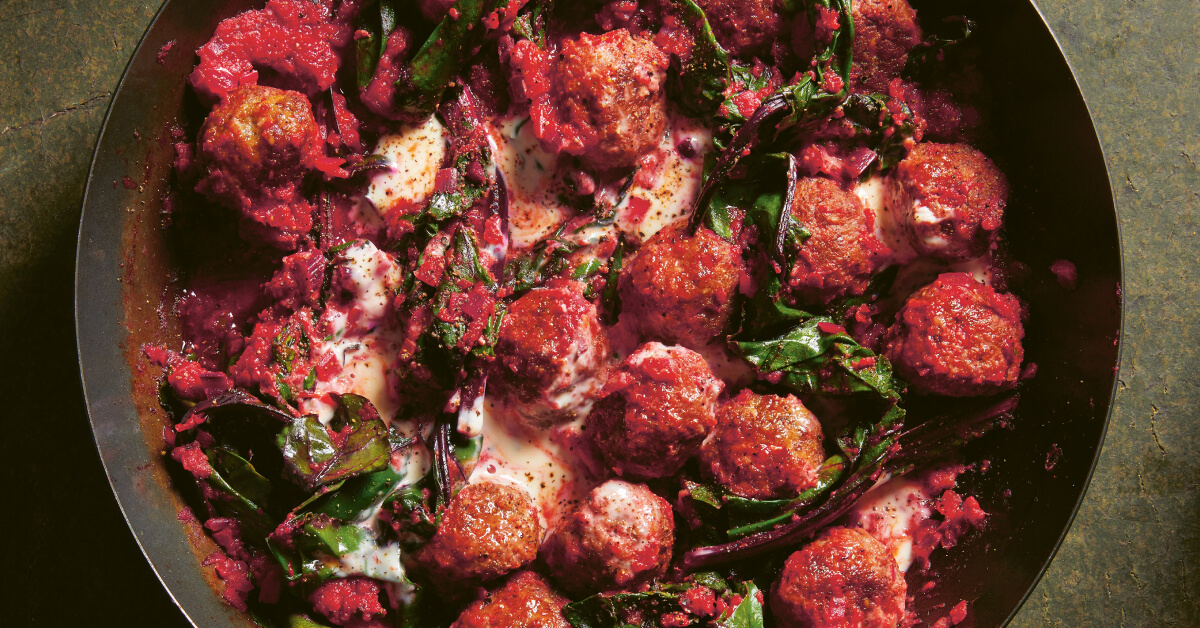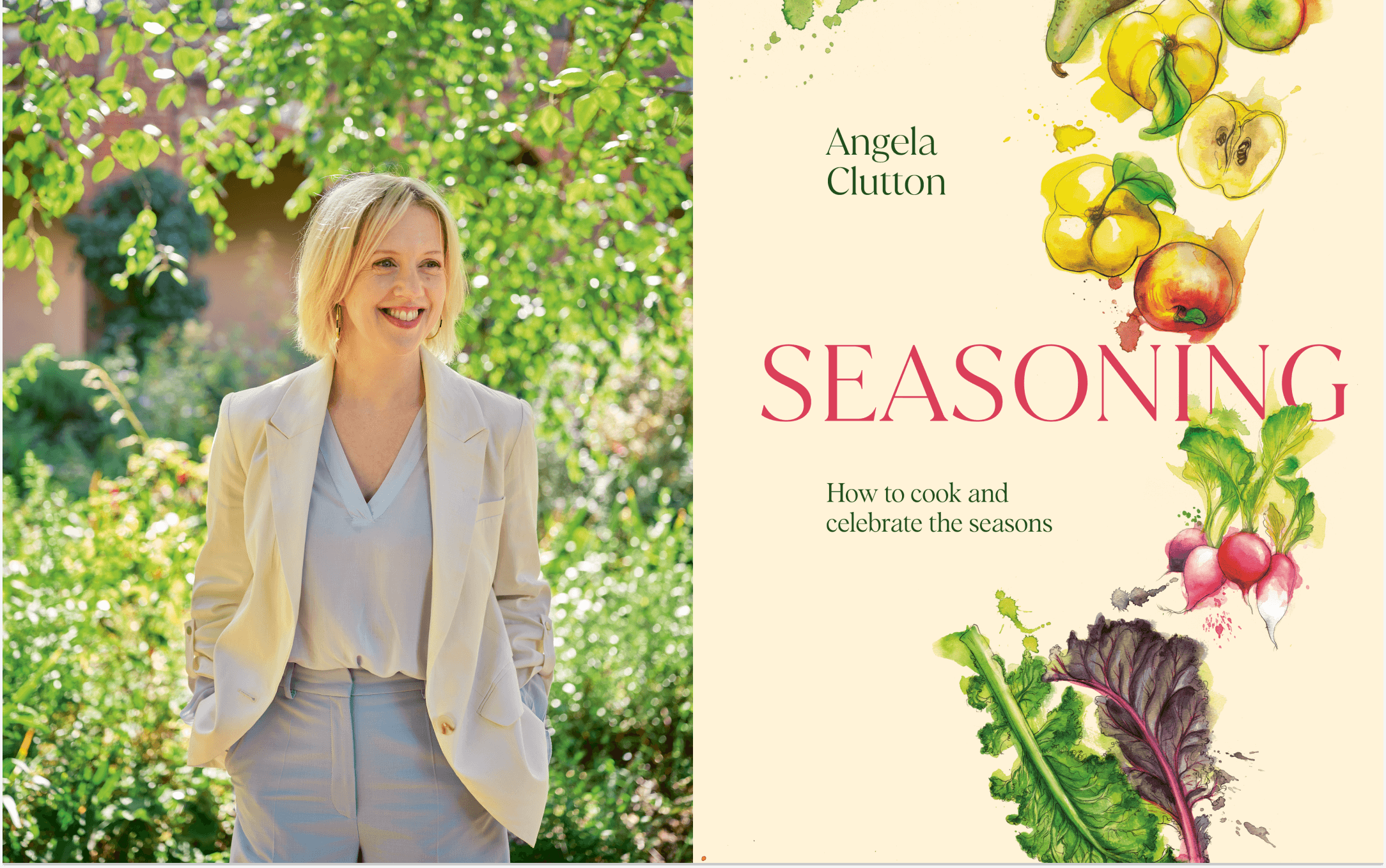Recipe + pairing | Angela Clutton's Baked za’atar meatballs with tomato sauce and beetroot tips
Seasoning by Angela Sutton (available now) features 75 delicious recipes matched to the rhythm of the seasons, celebrating the best produce available and featuring tips on how to avoid wastage, year round.
These za’tar meatballs had our mouths watering for a midweek dinner option - and we naturally got to thinking about a few midweek pairing options too. Here's the recipe, along with a couple of recommendations.
Pairing tip: “Za’atar might feel like it throws a curveball for pairing given it’s a spice blend - but trust your instincts; a wine that pairs just as well to the meat here will generally work well. My preference would be to match it with a red blend that leans towards the savoury side - something like a GSM from McLaren Vale fits the bill here… but a succulent straight sangiovese or a nebbiolo is also sure to please everyone at the table too.” - Nick
Try this with:
Pirramimma Heritage GSM 2020
The easiest decision you’ll make all week. Great GSM is a thing of beauty, and when you find one you love we suggest you don't let it go. When it comes to quality and consistency, Pirramimma is solid as a rock. They’ve been at it for almost 130 years, so it’s to be expected. This GSM is beautifully balanced, hitting all the right notes in terms of fruit, oak and tannin. The nose exhibits blackberry, plum and toffee, along with hints of pomegranate and cedar. On the palate there’s raspberry, more plum, cranberry and vanillin. We suspect this one will move faster than you can say GSM.
Lornano Chianti Classico DOCG 2020
Borderline perfect Chianti Classico. Savoury, earthy, tart - this is a hall of famer in the making. Bold and supple, with heaps of saucy black cherry action. The acid’s there; that common theme in pretty much all Italians that guarantees food-friendliness. Dusty cypress-lined gravel path tannins give just the right hint of the rustic, without taking away from the class and poise of what is a cracking vino. It's full, it's robust, it's sappy, it's bright, and it's long - we can see why the critics are raving, this is something special to be sure.

Baked za’atar meatballs with tomato sauce and beetroot tips
This is not just a terrific dinner, but shows off just how beetroot stalks and leaves are delicious and useful in their own right, too. This dish would certainly be nice enough without the beetroot stalks cooked into the base of the dish, or indeed the beetroot leaves added for the finish – but not nearly so good as with them.
Serve with plenty of couscous, stirred through with lots of chopped herbs, salt and a squeeze of lemon.
Serves 4 as a main
For the sauce
2 red onions
3 tbsp olive oil
4 garlic cloves
stalks and leaves from 6 beetroots
5 anchovy fillets, drained of oil
1 x 400g (14oz) tin chopped tomatoes
2 tbsp grated fresh horseradish
2 tbsp crème fraîche
salt and black pepper
For the meatballs
1 red onion
2 garlic cloves
400g (14oz) minced beef or lamb
1 tbsp za’atar
80g (3oz) breadcrumbs
1 egg
2 tbsp olive oil
salt and black pepper
Make the sauce first: Peel and chop the onions. Heat the olive oil in a large deep frying pan and cook the onions over a gentle heat until starting to tenderise and taking on a little colour. Peel and finely chop the garlic cloves, and add those too.
While they are cooking, separate the beetroot leaves from the stalks. Sit the leaves in very cold water to keep them perky. Finely chop the stalks, and add to the frying pan. Let them cook down for 5 minutes, stirring, then add the anchovies and chopped tomatoes. Rinse out the tomato tin with water and add that to the pan too. Season. Simmer for 20 minutes. Set aside while you make the meatballs.
For the meatballs: Preheat the oven to 210°C fan/450°F/gas 8.
Peel and grate the onion and garlic into a bowl, add the minced meat, za’atar and breadcrumbs, and season well. Beat the egg and add, then use your hands to bring the mixture together. Divide into 20 equal pieces, rolling them into balls as you go. Sit the meatballs on a baking tray, drizzle over the oil and bake in the oven for 15 minutes.
For the last 5 minutes of the meatballs’ baking time, put the sauce back on the heat and stir in the horseradish. Lift the beetroot leaves out of the water and sit on kitchen paper to dry, then just before the meatballs are ready, stir the crème fraîche and beetroot leaves through the sauce. Remove the meatballs from the oven and sit them on top of the sauce. Pour over any oil left behind in the baking tray, grind over plenty of black pepper and serve straight away.
WASTE TIPS:
Anchovies: The oil accompanying preserved anchovies is fabulously flavourful. It may not be the best quality oil, but it is too good to waste. Whenever you reach the end of a jar or tin of anchovies, use the oil in the beginning of whatever you cook next that will benefit from a layer of anchovy flavour (that will be pretty much anything savoury). Make anchovy butter with any last ones in a jar/tin – simply crush them into soft butter. Roll, wrap, and fridge/freeze.
Horseradish: I use fresh horseradish a lot, and always seem to end up grating off more of the root than I need for a recipe. The happy outcome of that is stirring it through whatever crème fraîche or full-fat Greek yoghurt I might also have around, giving it a good squeeze of lemon and lots of black pepper, then keeping that in the fridge for a ready-made horseradish sauce. Note also that horseradish – like fresh root ginger – will keep brilliantly in the freezer to grate straight from there without any bother to peel first.
Vegetables
For stocks
- Keep in the freezer a bag or container into which you can easily put the (washed if necessary) peelings and trimmings of vegetables or herbs to use as the basis of making stocks. As the seasons roll round what you add to the freezer bag will change, giving the stocks a natural seasonality of flavour.
- Put the trimmings straight from the freezer into a large pan, cover with an equal volume of water, add salt and whatever fresh herbs might be around. (Add poultry bones for a meat stock.) Simmer for about an hour, strain, and that’s your stock ready to use/freeze.
Good things to use: Asparagus ends; broad (fava) bean pods; carrot peelings; cavolo nero ribs; celeriac peelings; celery trimmings; cucumber peel, seeds and core; fennel trimmings; garden pea pods; soft herb leaves and stems (e.g. basil, coriander (cilantro), mint, oregano, parsley); leek trimmings; onion skins; parsnip peelings; pumpkin and other squash fibres/skin (not flesh); shallot skins; spring onion (scallion) trimmings; sweet pepper (capsicum) trimmings; tomato skins, seeds and vines; woody herb leaves and stems (e.g. rosemary, thyme).

Images and text from Seasoning by Angela Clutton, photography by Patricia Niven. Murdoch Books RRP $55.00 - available via Booktopia.
